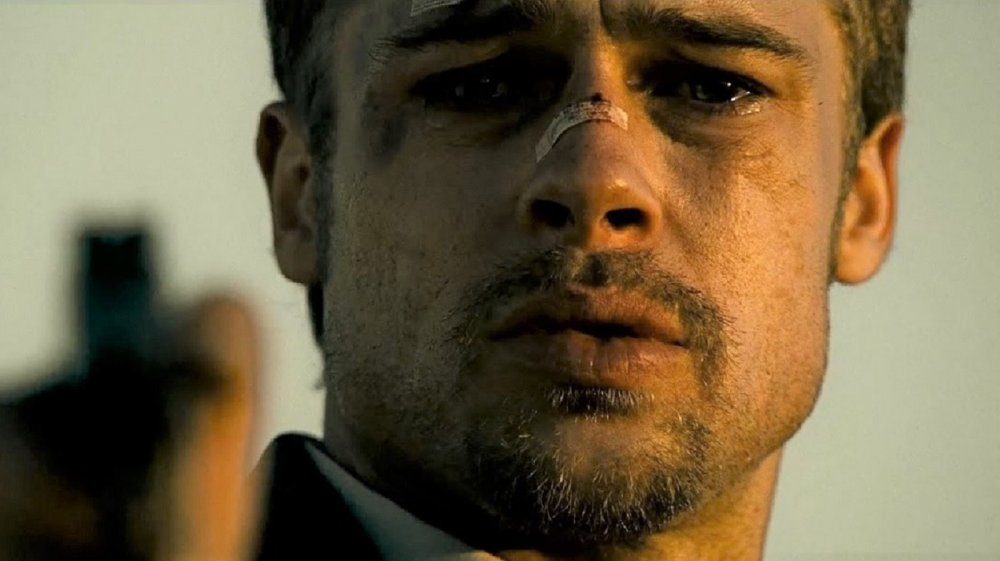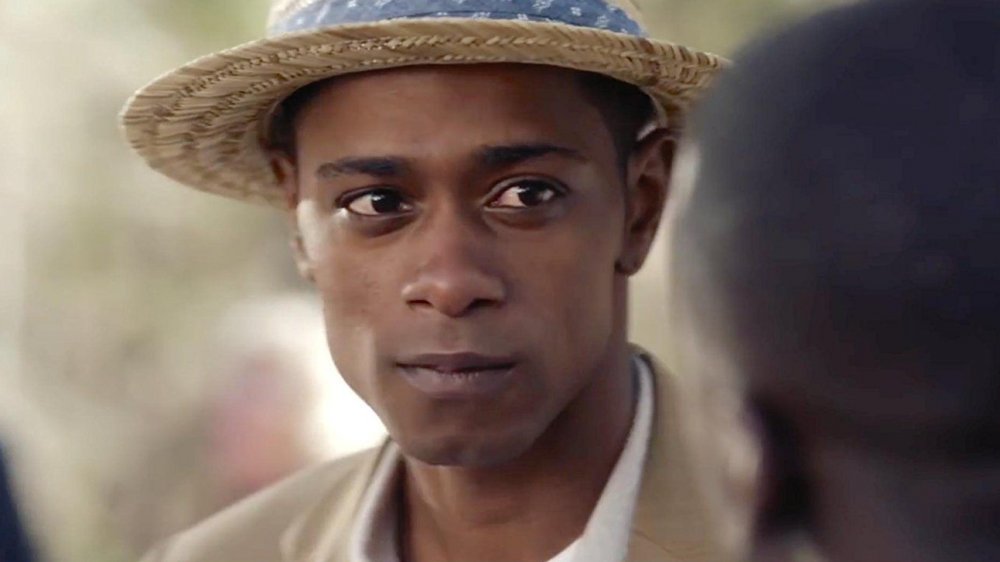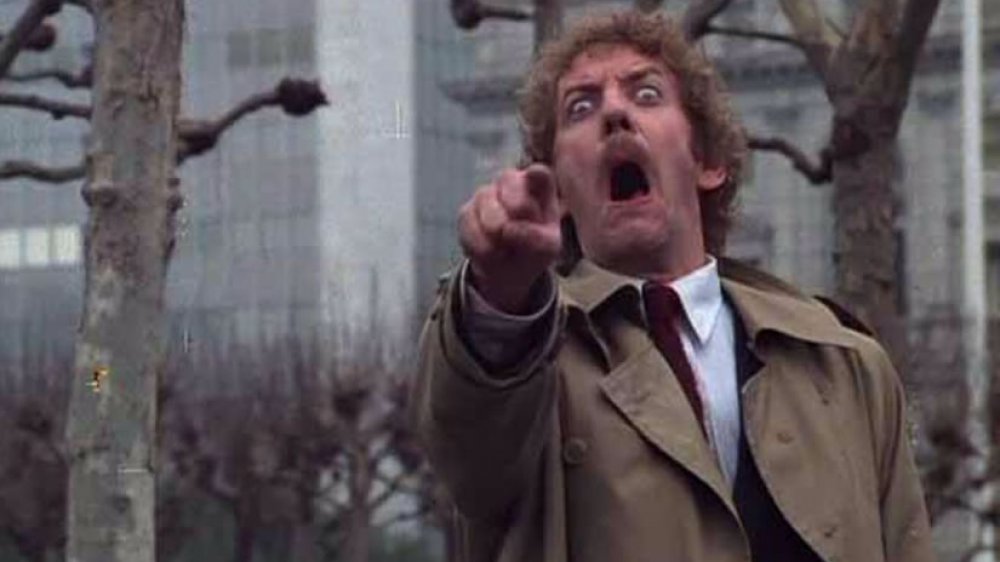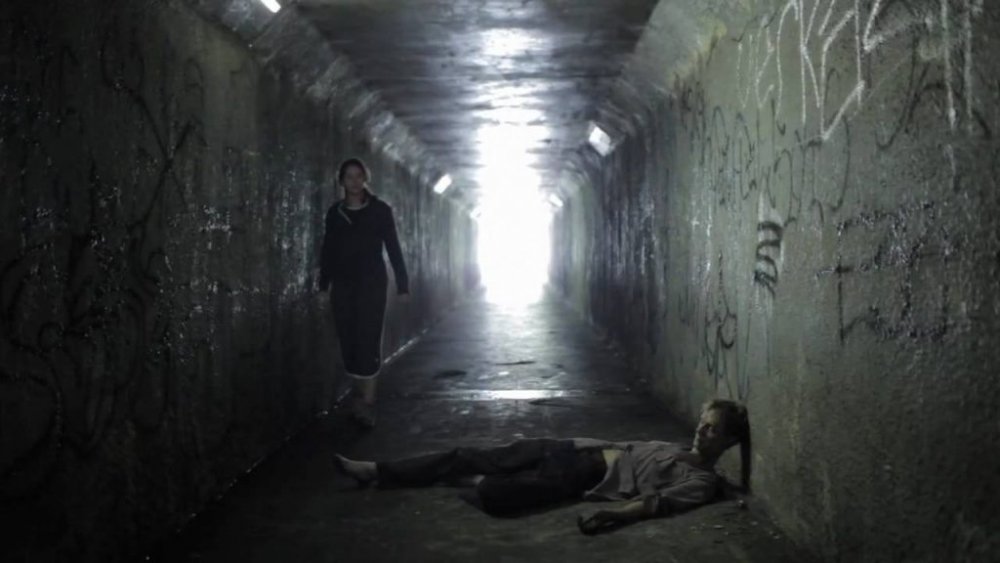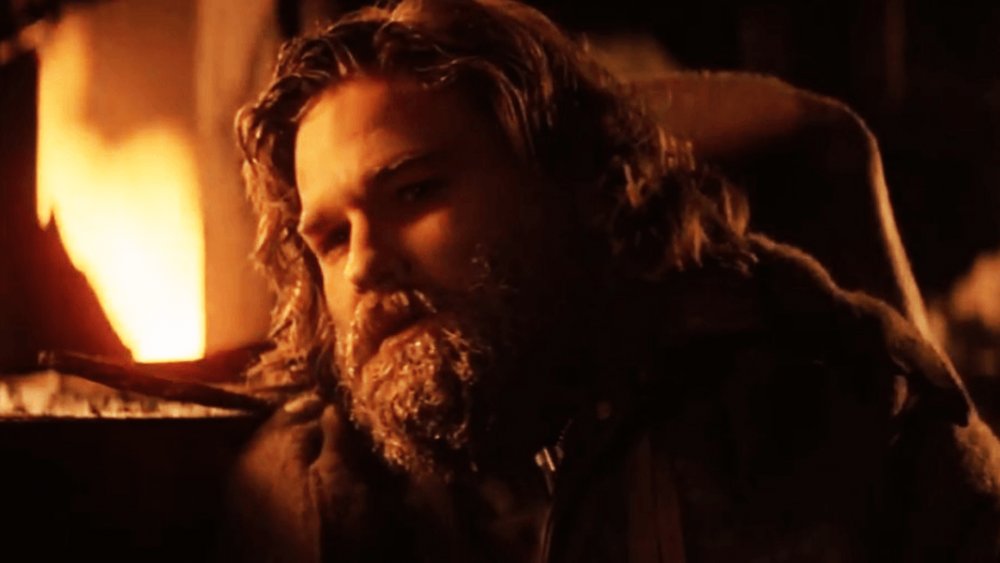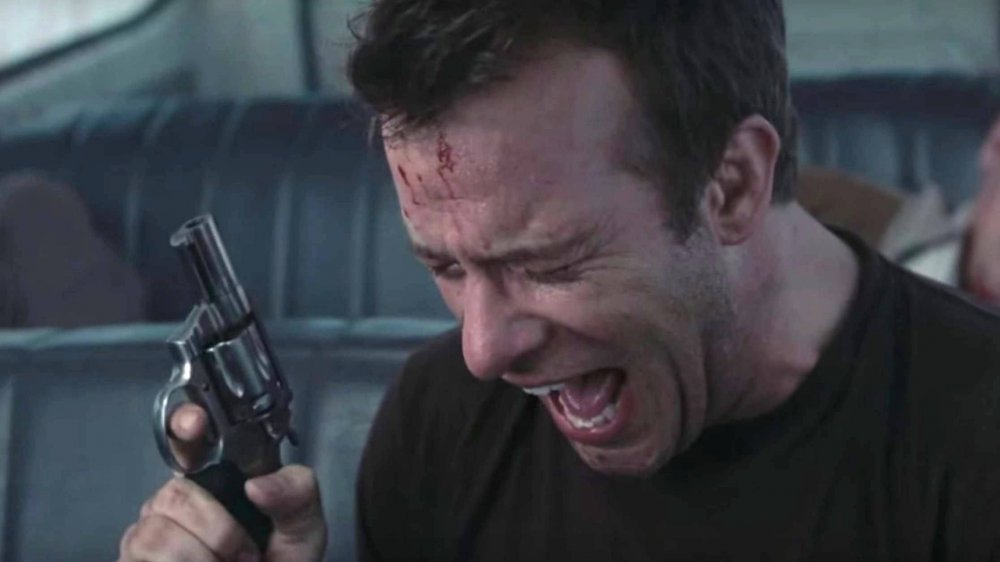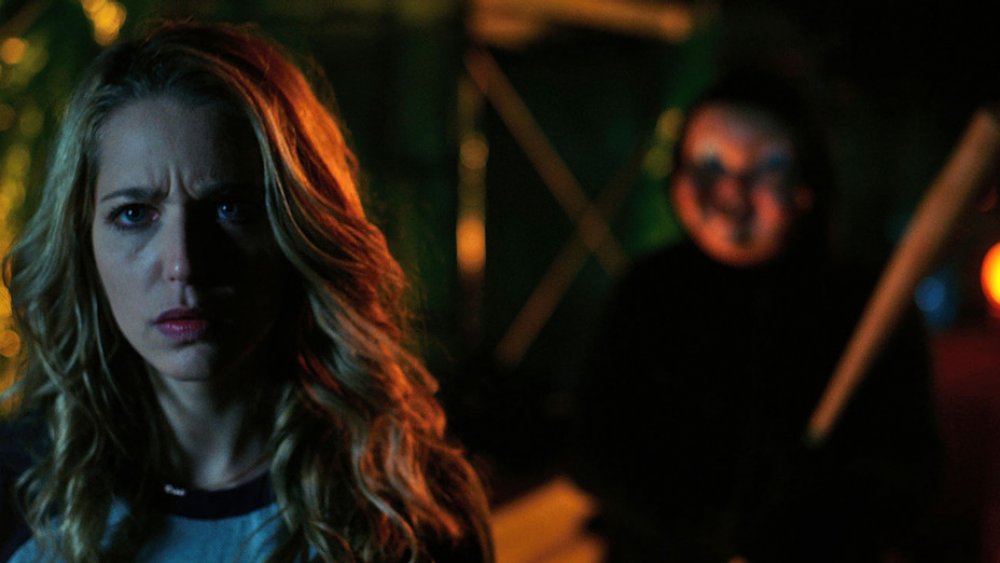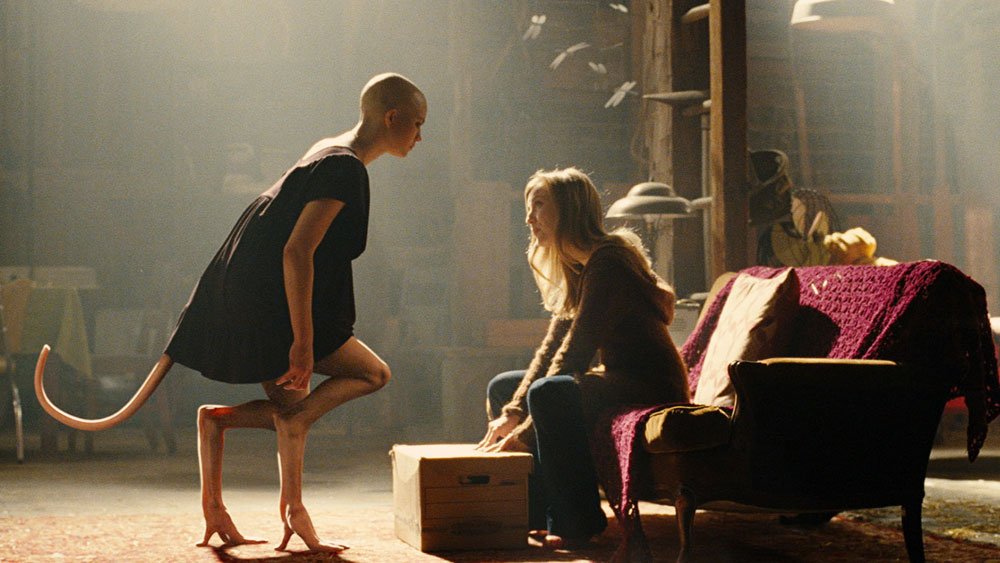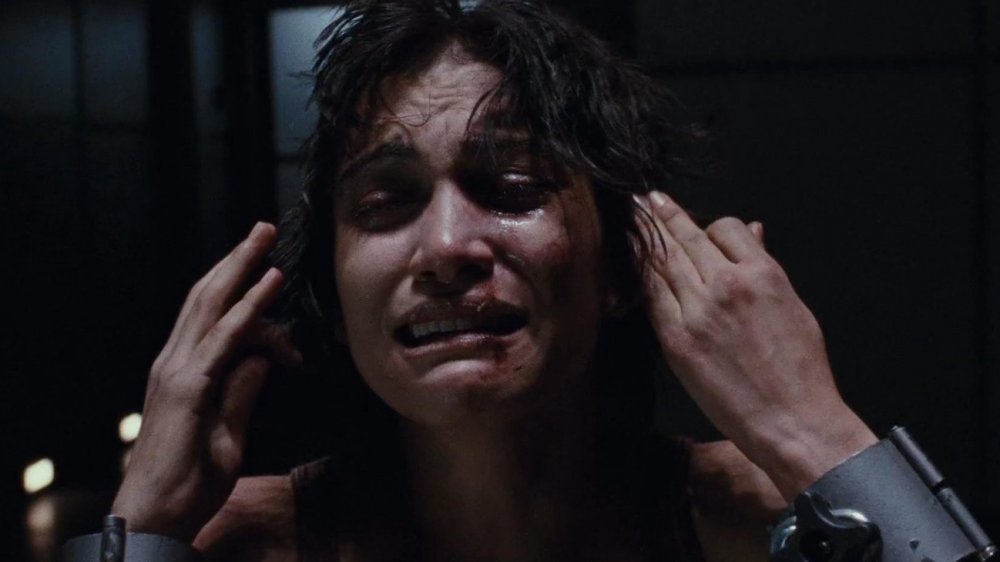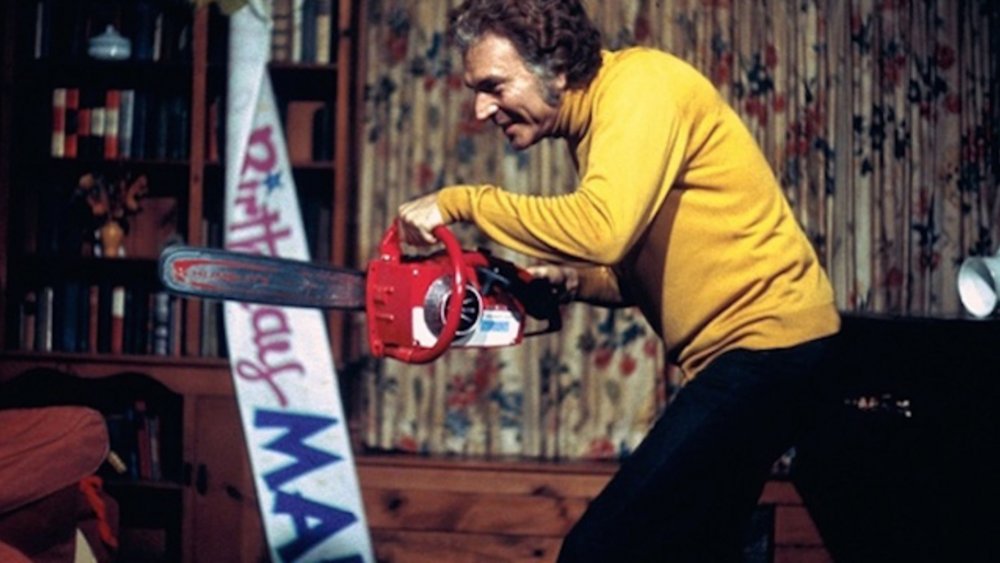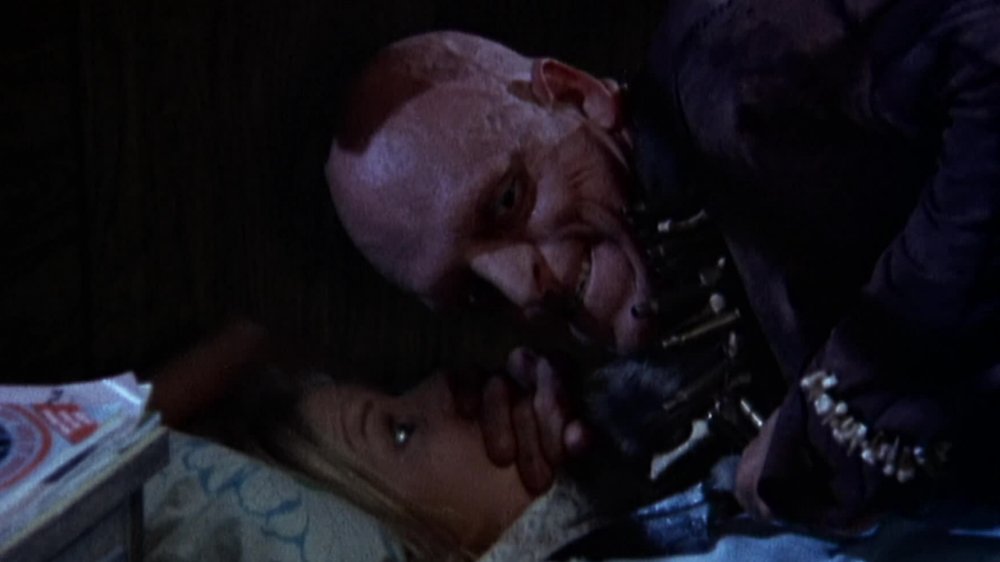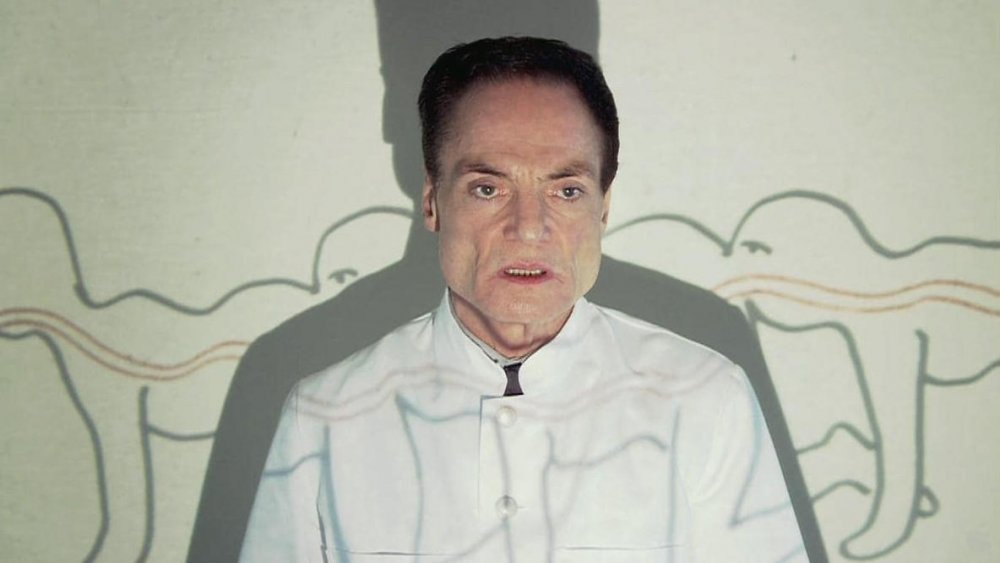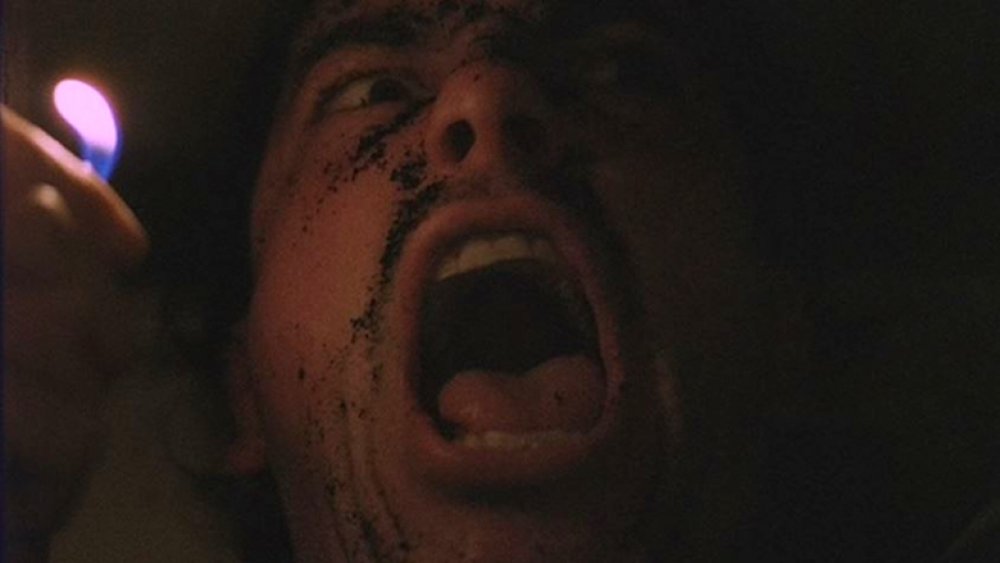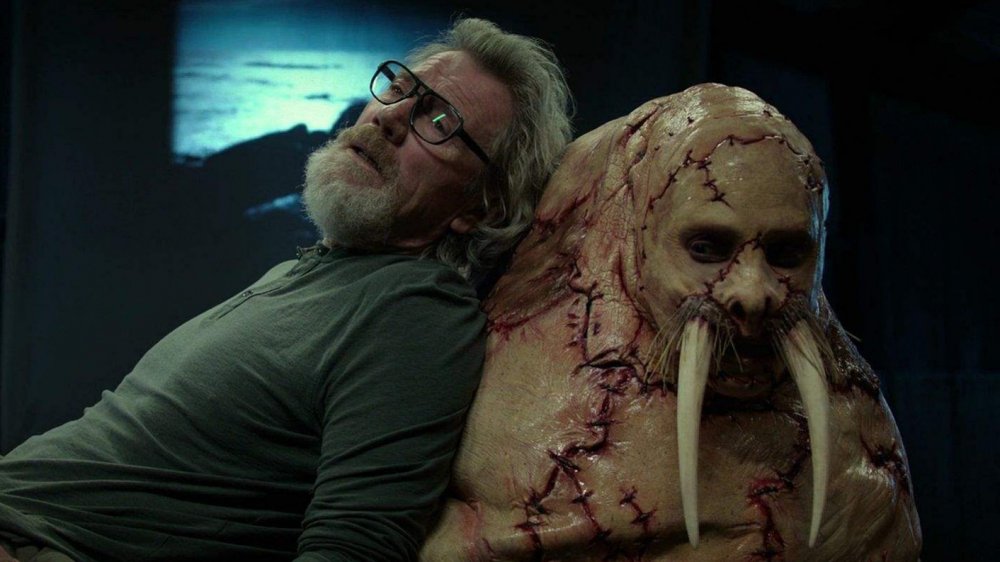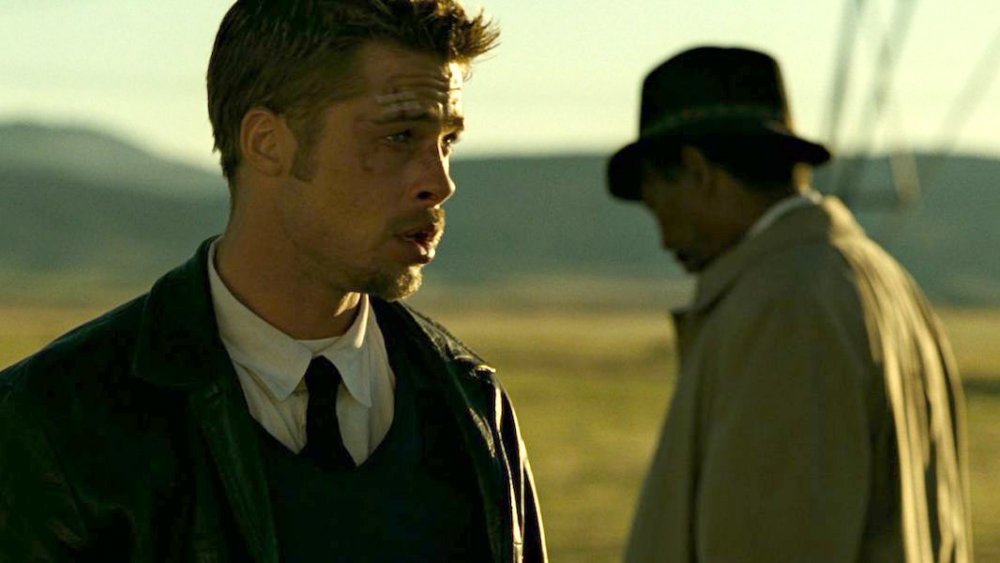Horror Movie Outcomes That Were Worse Than Dying
When it comes to horror movies, the name of the game is survival, and it's a game that huge numbers of characters often end up losing over the course of a film. The Final Girl trope wasn't born in a vacuum, as audiences rooted for someone to make it to the end of the movie and, better yet, eliminate the threat while they're at it, setting the universe back in order.
But since horror is also a genre that tests the boundaries of human experiences, especially the traumatic ones, there are often fates way worse than death that take place on screen, haunting viewers long after the movie has ended. Sadly, the dark side of survival plays a huge part in these disturbing films and only indicates that the actual worst might still be yet to come. Take a deep, calming breath as we explore the horror movie outcomes that were worse than dying.
(Be warned — major spoilers below.)
Not everyone escapes in Get Out
In Get Out, Chris Washington thinks he's the only Black guy his girlfriend, Rose Armitage, has ever dated, so he's nervous to meet her family at their estate in the woods. But Chris' nerves turn to outright fear when he discovers that there seems to also be something off with all the other Black folks in the Armitages' orbit. As Chris uncovers the depth of the Armitages' racist depravity — they're inserting the brains of elderly, rich white people into kidnapped Black bodies — he finds a huge stack of Polaroids of Black people who've been entrapped by Rose.
After an epic struggle, Chris escapes the Armitage clutches and burns their evil plantation down, surviving with the help of his friend, Rod. But what will happen to Chris when the police inevitably find his DNA on Rose's dead body? How will he explain? Worse still, what happened to all those other kidnapped Black folks whose brains had been replaced? There were dozens of them we never met on screen. They will never see justice for all that was stolen from them just because they're Black, and that outcome is indeed a fate worse than death.
Invasion of the Body Snatchers ends on a horrific note
Philip Kaufman's 1978 film Invasion of the Body Snatchers takes a different approach to this well-known story about aliens that seeks to replace humans with pod version replicas that are exact copies ... except for a total lack of empathy and emotion. In the 1956 original, the aliens were defeated, but the 1978 version sees a long struggle for the main protagonists — Matthew, Elizabeth, and Nancy — as they try to avoid falling asleep and winding up replicated by the evil extraterrestrials.
By the end, Nancy has remained human, and when she sees Matthew again, she assumes he's still himself, too. But in a chilling moment, Matthew emits a horrendous screech that lets all the aliens around him know that a human is in their midst who needs capture. This tale about cultural assimilation and the violent forms it can take is horrifying, and the fact that someone might walk around with our very face and memories who isn't actually us is absolutely worse than outright dying.
Absentia presents a fate worse than death
It's been seven years since Tricia's husband, Daniel, disappeared without a trace near their Glendale home. Tricia held out hope for years, but she's now very pregnant with the baby of Detective Mallory, the man assigned to help find her husband, and she's preparing to file for Daniel's death in absentia so she can move on. In the meantime, Tricia's sister, Callie, moves in to help with preparation for the baby, as well as protect her own sobriety. But on one of her runs, Callie sees something monstrous that she can't explain in a tunnel near Tricia's place. Another time, she meets a sickly looking man named Walter who claims to have been missing for years and who's shocked Callie can see him.
Things escalate quickly when Daniel shows up at Tricia's doorstep, malnourished and badly hurt, claiming he'd been taken by monsters and kept prisoner "underground." After Callie relapses from stress, she discovers that some kind of insectoid creature preys on humans from that very nearby tunnel, secreting them to a parallel universe where it feeds on them and their suffering. By the end of Absentia, lots more people have gone missing, and they're forced to watch the human world continue without them from the monster's cruel and shielded world. Death would've been a blessing by the end of this quietly terrifying film.
The Thing ends in icy horror
It's bad enough to be stuck in the subzero temperatures of the Arctic. But in John Carpenter's The Thing, when an excavation team accidentally releases an alien life form that can perfectly mimic any being at all, the stakes for survival jump into hyperspeed as the team of researchers tries first to contain and then destroy the entity. What's marvelous about this creature feature is how quickly the humans turn on each other, and mistrust becomes the word of the day as the monster assimilates more and more people. The death toll is high, and the ways people get killed are weird until we reach the last two folks standing.
Unlike other horror movies with fates worse than death, The Thing ends quietly and on a contemplative note as the survivors realize there's no fighting the monster, that one of them might be the monster, and they might as well just have a scotch together as they wait to see what happens next. The futility is the horror here, and getting assimilated by an alien who can use your face to deceive other people is worse than a simple death.
The Mist is a gut-punch of despair
When a strange mist rolls through Bridgton, Maine, a cohort of townsfolks find themselves trapped in the local supermarket ... and they soon learn the mysterious fog is filled with dinosaur-sized bugs that lay siege to the store. Tensions run high as the villagers begin pointing fingers at each other, trying to pin blame, including a religious fanatic who's convinced the rapture is nigh. When human sacrifice comes into play, David — one of the leaders on the side of reason — leads a terrifying escape attempt, along with his son and three allies.
But as we reach the end of The Mist, the situation gets increasingly desperate as David's car runs out of gas just as it seems another attack is imminent. David decides death is better than monsters, so he summarily kills everyone in the car with the last bullets he has left, including his own son. And that's when the US Army shows up, rolling through the mist and clearing out the creatures. If David had only waited, they would've been saved, and now, he's killed his own son for nothing. The sound David makes when he realizes what he's done is chilling. David survived, but the cost was worse than dying.
In Happy Death Day, you die again and again
A fate worse than actually dying might be dying horribly, only to wake up again and again to be killed a worse way every time. This is the case for Tree Gelbman, who suddenly finds herself stuck in a time loop where a masked killer hunts her down, kills her, and resets her birthday after each new death. As Tree's injuries worsen and an accident leads her to the hospital, she finds that each death has left its mark in and on her actual body, further evidence that she's not crazy and that someone has enchanted her in a most terrible way.
By the end of Happy Death Day, Tree discovers who wanted her dead and sets things to rights. Almost. The film's sequel Happy Death Day 2U unfortunately informs Tree that her time loop issues are far from solved, and the poor girl has a lot more dying to do before she's free to live again. Tree is visibly depleted, hurt, and emotionally exhausted from this unending ordeal, a fate she'd agree is far worse than dying.
The outcome in Splice is incredibly icky
Vincenzo Natali's sci-fi horror Splice takes genetic engineering to the next level when geneticist couple Clive and Elsa make a huge breakthrough with DNA manipulation, creating an entirely new hybrid creature whose genetic makeup could be used for a variety of human ailments and treatments. But their bosses feel the research has gone far enough, so in secret, Elsa creates a humanoid girl that she and Clive raise as their child. As Dren ages quickly and with an entire battery of abilities Elsa hadn't ever planned for, such as the ability to breathe underwater, Dren gets too big and too strong for either Elsa and Clive to control.
When the creature hits puberty, though, that's when Splice gets truly gnarly. Dren sexually assaults her father, Clive, later killing him. Worse, Dren's genetic powers allow her to transform into a male, sexually assaulting her mother, Elsa, whose DNA is actually part of Dren's own core code. Yikes. This disturbing moment of incest compounds when Elsa gets pregnant ... and she keeps it. Knowing what we know about Dren, the horror was only just beginning for Elsa and her child.
Martyrs is very messed-up
When Anna agrees to help her friend Lucie hunt down the people she believes kidnapped, imprisoned, and tortured her, Anna is skeptical at first. Lucie is a very traumatized woman after what she escaped in her childhood, and it's not clear if she's having a psychotic break or if something horrible is actually happening. But as Martyrs ramps up, the truth only gets worse. Not only was Lucie really kidnapped and tortured, it turns out there's an entire basement where human experimentation continues on young girls.
Things get truly grisly when Anna is subsumed into the plot of a secret society, which includes unimaginable torture in order to place the victim in an ecstatic trance so they can peer into the world beyond the living. Anna is skinned alive and doesn't die. What she sees from her horrific flayed perch is so disturbing that it sends the leader of the group into her own suicide. How long did Anna continue living after that grotesque fate, seeing what she saw? No matter how many human minutes it might've been, the pain would've felt eternal. That's an outcome far worse than straightforward death.
There's a lot of grief in The Last House on the Left
After Estelle and John Collingwood discover their only daughter, Mari, and her friend have been sexually assaulted, murdered, and dumped in the woods near their home, they're absolutely beside themselves with grief. The perpetrators, a group of thugs recently released from prison, find their way to the Collingwoods, pretending to be salesmen and not knowing these were Mari's parents. When Estelle realizes these monsters are the ones who killed her daughter, she and her husband go on a brutal rampage, murdering the interlopers with unabashed glee.
Wes Craven's tale about good people pushed over the edge thanks to grief and trauma is as intense now as it was in 1972. The moment when John happily chainsaws the last killer to death in plain view of the sheriff is a moment for the ages. But what happens next? Estelle and John have now murdered five people in cold blood, with one killing witnessed by law enforcement. Will they spend the rest of their lives in prison thinking about what happened? How will the trauma affect them over the long term? Folks who've been watching this film for decades still wonder, making this easily an outcome for the Collingwoods far worse than dying.
The Hills Have Eyes has a haunting outcome
Wes Craven's The Hills Have Eyes is a gory survival film that has a surprisingly high survivor count by its gruesome end, a fact that makes this a painfully haunting movie. After being set upon by a group of cannibals in the Nevada desert, the Carter family is thrown into a brutal game of cat and mouse as the monstrous Papa Jupiter and his kin terrorize, torture, and kill members of the Carter clan one by one.
Teenage Brenda Carter is raped by one of Jupiter's grotesque children but left alive. Her younger brother, Bobby, sees too much of the carnage that takes most of his family, and infant baby Katy is almost cooked by Jupiter's wife. But Doug, the son-in-law, has a full psychotic break by the end of the movie, turning into as brutal and crazed a killer as the people who slaughtered his wife and extended family. As he's now the caretaker of not just Baby Katy but also the surviving traumatized Carter children, we shudder to think about how the rest of their lives played out. Would any of them ever thrive like they did before coming into Jupiter's orbit? The look on Doug's face by the end suggests no, making theirs a sad fate far more lasting than death.
The Human Centipede is one big nightmare
It wouldn't be surprising that one of the objectively most disgusting stories ever put on screen would also feature one of the worst outcomes other than death. Tom Six's The Human Centipede follows a crazed Nazi doctor who's fixed on a science experiment that would involve surgically attaching humans to each other end-to-end to create a segmented human, like a centipede. Dr. Heiter kidnaps three tourists for his project and successfully creates his first human centipede. However, he's totally under suspicion for the tourist disappearances, and his nasty work is uncovered by police in a bloody shoot-out worthy of a Tarantino film.
Unfortunately, the only survivor is Lindsey. She's sewn firmly into the middle of the centipede, and the film ends with the sounds of Lindsey's muffled sobbing as she's affixed to a dead man's butt. How long does she live on in that foul state before being found? Does she get found? Or does she continue to suffer in that pose until the release of death? The thoughts are all unimaginable. As part of the human centipede, her fate was already worse than death. But to be stuck in it interminably? True hell on Earth.
The Vanishing has one of horror's scariest outcomes
While most messed-up horror movie outcomes end in tragic yet overtly clear terms, the original 1988 version of The Vanishing isn't one of them in the least. Rex's girlfriend, Saskia, goes missing, and it becomes Rex's obsession to find out what happened to her. In a parallel story, we meet a psychopath named Raymond who's testing the boundaries of what evil he can get away with. When Rex's fixation with Saskia becomes news, Raymond approaches Rex and tells him he knows what happened to Saskia, but if he wants to know what, Rex must experience it himself. Against his better judgment, Rex agrees ... and wakes up buried alive.
What's quietly horrifying about The Vanishing is the fact that we never definitively find out what happened to Saskia or if Raymond actually had anything to do with it. He's an unreliable figure whose words we can't trust on face value. We also don't know if Rex is actually left there to die or if Raymond might've had more in mind as he flexed his psychopathy. The horrible ambiguity of this ending is absolutely unforgettable, and Rex's is easily one of the worst horror movie fates aside from outright death.
Tusk gets really grotesque
In Kevin Smith's Tusk, Wallace is a shock jock podcaster with a popular show that openly mocks people whose videos go viral. After his upcoming interviewee kills himself thanks to the bullying Wallace and his bestie, Teddy, encourage on their show, Wallace decides to find someone new to interview. He sees a flyer for a local weirdo, Howard Howe, who gives folks free room and board to just chat with him. If it sounds too good to be true, it surely is.
Howe is a deeply traumatized man who kidnaps people and tries to turn them into a walrus named Mr. Tusk. Wallace manages to get a call out to Teddy, but by the time he and Wallace's girlfriend find him, Howe has already sewn him into a walrus suit that can't be undone. This grotesque story from Kevin Smith ends with Walrus Wallace living in a zoo, getting a yearly visit from his old friend and girlfriend. Tears stream down Wallace's face, indicating he's very much aware of his situation and is in all kinds of pain from surviving in this demented form.
Seven is full of horrible outcomes
As it's about a serial killer who murders people based off their perceived violations of the Seven Deadly Sins, David Fincher's Seven features some of the most gruesome death tableaus ever put to film. But none of that matches what the survivors will have to live with by the end of John Doe's rampage, when Detective Mills "becomes" Wrath and enmeshes his own story with the killer he was hunting. Not only does Mills lose his beloved wife and their unborn child to John Doe, he himself goes to jail for an extrajudicial killing. By the end of Seven, Mills is veritably catatonic with grief, and when it catches up with him, his world of pain would only be beginning.
Equally dreadful is John Doe's victim that he deems guilty of Sloth, who's kept barely alive and tied to a bed as his punishment for a plethora of crimes. The moment the living skeleton opens his mouth to breathe, later revealing he'd eaten his own tongue, is one few horror fans can forget. And as his eventual doctor says, "He's experienced about as much pain and suffering as anyone I've encountered ... give or take ... and he still has hell to look forward to."
